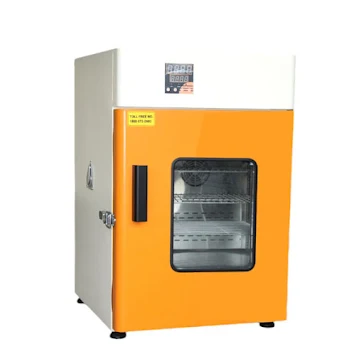Laboratory incubators are essential equipment in microbiology, diagnostics, and research laboratories. They provide a controlled environment that supports the growth of bacteria and microorganisms under stable temperature conditions. Among the most commonly used options are bacteriological incubators and modern digital incubators. While both serve similar purposes, their design, accuracy, features, and applications differ. This blog explains the pros and cons of bacteriological incubators compared with modern digital incubators, helping laboratories make informed decisions based on their needs.
🔹 Quick Summary
Bacteriological incubators are simple, reliable, and cost-effective solutions for routine microbiology work. Modern digital incubators offer higher precision, programmable controls, and monitoring features, making them suitable for research-focused and regulated laboratory environments.
Table of Contents
- What Is a Bacteriological Incubator?
- What Is a Modern Digital Incubator?
- Key Differences Between Bacteriological and Digital Incubators
- Pros and Cons of Bacteriological Incubators
- Pros and Cons of Modern Digital Incubators
- Which Incubator Is Right for Your Lab?
- Conclusion
- FAQs
What Is a Bacteriological Incubator?
A bacteriological incubator is designed to maintain a stable temperature—typically from 5°C above ambient to around 60°C—to promote bacterial growth. These incubators use basic heating systems and simple controls, making them easy to operate and maintain.
Common Uses:
- Microbiology and pathology laboratories
- Diagnostic centers
- Educational and teaching laboratories
Because of their straightforward design, bacteriological incubators are widely used for routine incubation tasks.
What Is a Modern Digital Incubator?
A modern digital incubator uses microprocessor-based control systems to regulate temperature with high accuracy. Most models feature digital displays, programmable settings, alarms, and sometimes data logging capabilities. These features allow better monitoring and consistency during incubation.
Common Uses:
- Biotechnology and pharmaceutical research
- R&D laboratories
- Regulated environments requiring documentation
Key Differences Between Bacteriological and Digital Incubators
| Feature / Parameter | Bacteriological Incubator | Modern Digital Incubator |
|---|---|---|
| Primary purpose | Routine bacterial culture and incubation | Precision incubation for research and regulated labs |
| Temperature range | Typically ambient +5°C to ~60°C | Similar or wider range depending on model |
| Temperature control system | Thermostat-based or basic digital control | Microprocessor-controlled system |
| Temperature accuracy | Moderate (suitable for routine work) | High accuracy and stability |
| Monitoring features | Minimal | Alarms, timers, status indicators |
| Data logging | Not available | Available in many models |
| Cost | Budget-friendly | Higher initial investment |
- Cost-effective for small and medium labs
- Easy to operate with minimal training
- Durable construction and low maintenance
- Ideal for routine microbiology work
- Lower temperature precision
- No advanced monitoring or data logging
- Limited suitability for regulated or research-intensive labs
- High accuracy and stable temperature control
- Programmable incubation cycles
- Alarm and safety features
- Suitable for research and compliance-driven labs
- Higher purchase and maintenance costs
- Requires trained personnel
- Electronic components may need professional servicing
Pros and Cons of Bacteriological Incubators
✅ Pros
❌ Cons
Pros and Cons of Modern Digital Incubators
✅ Pros
❌ Cons
Which Incubator Is Right for Your Lab?
The right choice depends on your laboratory’s purpose and budget. Bacteriological incubators are best suited for routine testing, diagnostic labs, and educational institutions. Modern digital incubators are more appropriate for labs that require precision, advanced monitoring, and regulatory compliance.
Conclusion
Both bacteriological incubators and modern digital incubators play important roles in laboratory operations. While bacteriological incubators remain a dependable and economical choice for routine applications, digital incubators provide advanced features for research and regulated environments. Understanding your laboratory’s requirements will help you choose the most suitable incubator.














